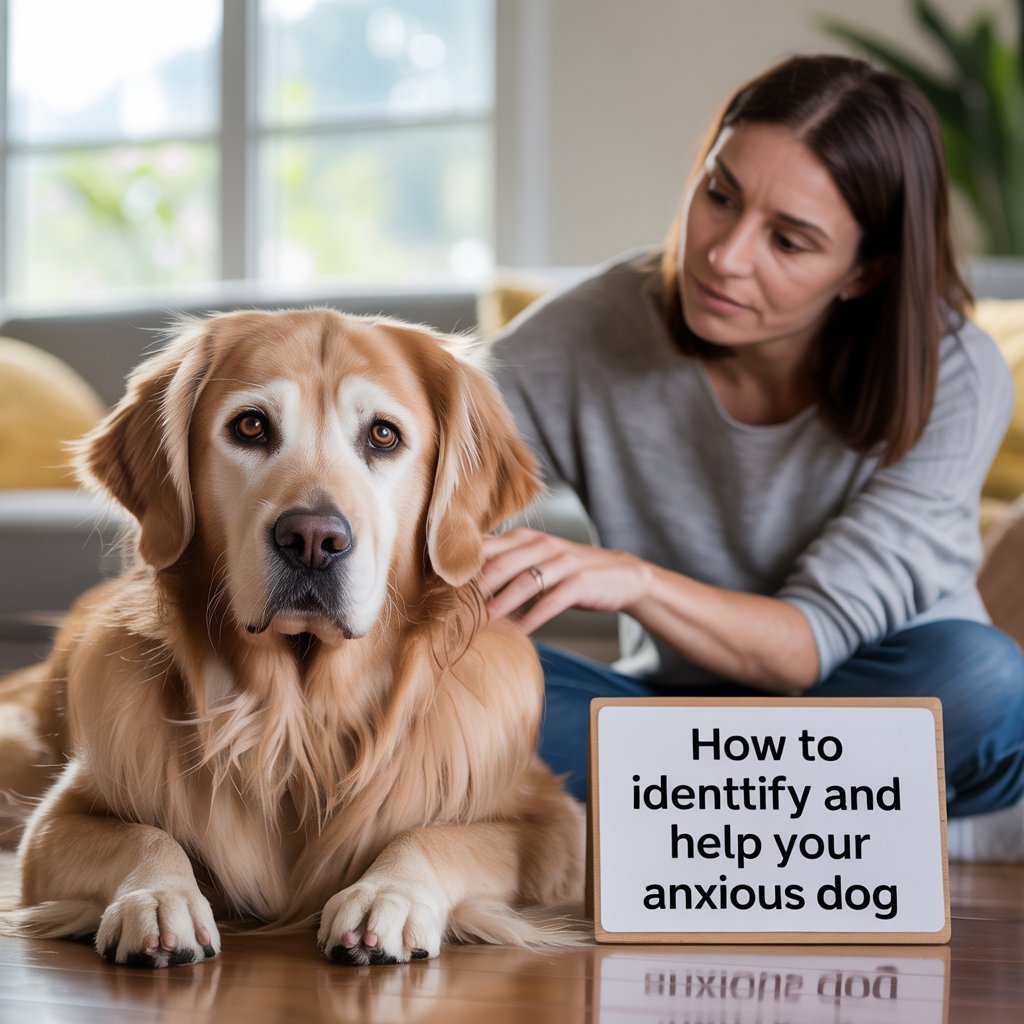Table of Contents
- Introduction
- Decoding Your Dog’s Anxiety: Signs and Symptoms
- Common Culprits: What Causes Canine Anxiety?
- A Helping Paw: Strategies to Support Your Anxious Dog
- Conclusion: A Path to a Calmer Companion
- Frequently Asked Questions (FAQs)
Introduction
As devoted dog owners, we cherish the boundless joy and unwavering companionship our furry friends bring into our lives. However, just like humans, dogs can experience anxiety, a condition that can significantly impact their quality of life and the human-animal bond. An anxious dog isn’t a “bad dog”; they are a companion in distress, struggling with fear and uncertainty. Understanding the nuances of canine anxiety is the first crucial step toward helping your beloved pet find peace and confidence in their world. This comprehensive guide will equip you with the knowledge to identify the subtle and overt signs of anxiety in your dog, uncover the potential triggers, and implement effective, humane strategies to help them on their journey to a calmer, happier life.

Decoding Your Dog’s Anxiety: Signs and Symptoms
Identifying anxiety in dogs can be challenging as the signs can range from subtle to severe. It’s essential to observe your dog’s body language and behavior, especially in response to specific situations or environments.
Subtle Signs of Anxiety:
- Yawning, licking lips, and whale eye: These are often the earliest indicators that a dog is feeling uneasy. “Whale eye” is when the white part of the eye is visible.
- Panting when not hot or thirsty: Anxious panting is often shallower and quicker than temperature-related panting.
- Pinned-back ears: A dog’s ears can be very expressive. When they are flattened against the head, it’s a common sign of fear or anxiety.
- Tucked tail: A tail tucked between the legs is a classic sign of fear.
- Avoidance and displacement behaviors: Your dog might turn their head away, sniff the ground excessively, or suddenly start grooming themselves to avoid a stressful situation.
More Obvious Signs of Anxiety:
- Trembling or shaking: This can be a very clear indicator of fear.
- Restlessness and pacing: An inability to settle down is a common sign of an anxious state.
- Excessive barking or whining: Vocalizations can be a way for your dog to express their distress.
- Destructive behavior: Chewing on furniture, door frames, or other objects, especially when left alone, can be a sign of separation anxiety.
- Inappropriate urination or defecation: A house-trained dog having accidents indoors can be a symptom of anxiety.
Severe Signs of Anxiety:
- Aggression: Growling, snarling, or snapping can be a last resort for an anxious dog who feels trapped or threatened.
- Constant attempts to escape: Anxious dogs may try to flee from a situation, which can lead to them getting lost or injured.
- Freezing: Some dogs become completely still when they are overwhelmed by fear.
Common Culprits: What Causes Canine Anxiety?
Several factors can contribute to a dog feeling anxious. Understanding the root cause is pivotal in addressing the issue effectively.
- Separation Anxiety: This is one of the most common forms of anxiety in dogs. It occurs when a dog becomes distressed due to being left alone or separated from their owner.
- Noise Phobias: Loud noises such as thunderstorms, fireworks, and even vacuum cleaners can be terrifying for some dogs.
- New Environments or People: A new home, a visit to the vet, or the introduction of a new family member or pet can be unsettling.
- Past Trauma: Dogs with a history of neglect, abuse, or rehoming are more prone to anxiety.
- Lack of Socialization: Puppies who are not properly socialized during their critical development period (3 to 16 weeks) may grow up to be fearful of new things.
- Age-Related Anxiety: As dogs age, they can develop Cognitive Dysfunction Syndrome (CDS), which can lead to confusion and anxiety.
- Underlying Health Issues: Pain and certain medical conditions can manifest as anxiety. It’s crucial to rule out any physical ailments with a veterinarian.
A Helping Paw: Strategies to Support Your Anxious Dog
Helping an anxious dog requires patience, consistency, and a multi-faceted approach. Here are some effective strategies:
Environmental Enrichment and Management
Creating a safe and predictable environment can significantly reduce your dog’s anxiety.
- Create a Safe Space: Designate a quiet area in your home where your dog can retreat when they feel overwhelmed. This could be a crate with a comfy bed and a favorite toy.
- Provide Mental Stimulation: Puzzle toys, treat-dispensing toys, and regular training sessions can help to build your dog’s confidence and reduce boredom-related anxiety.
- Consistent Routine: Dogs thrive on routine. A predictable schedule for feeding, walks, and playtime can provide a sense of security.
- Avoid Triggers: In the short term, try to avoid situations that you know will make your dog anxious. For example, if your dog is afraid of loud noises, create a cozy space for them during a thunderstorm.
Behavioral Modification and Training Techniques
These techniques aim to change your dog’s emotional response to their triggers.
- Desensitization and Counter-Conditioning (DSCC): This is a gradual process of exposing your dog to their trigger at a very low intensity, while pairing it with something positive, like high-value treats. Over time, this helps to change their association with the trigger from negative to positive.
- Positive Reinforcement Training: Using reward-based training methods can help to build a strong bond with your dog and boost their confidence. Avoid punishment-based methods, as these can increase fear and anxiety.
- Relaxation Protocols: Teach your dog a “settle” or “relax” cue in a calm environment. You can then use this cue to help them calm down in mildly stressful situations.
The Role of Professional Help: Vets and Behaviorists
If your dog’s anxiety is severe or you are struggling to make progress, it’s time to seek professional help.
- Veterinary Consultation: Your first step should always be a visit to your veterinarian to rule out any underlying medical conditions that could be causing the anxiety. They can also discuss the possibility of anxiety-relieving medications or supplements.
- Certified Applied Animal Behaviorist (CAAB) or Veterinary Behaviorist: These professionals have specialized training in animal behavior and can develop a tailored behavior modification plan for your dog.
- Certified Professional Dog Trainer (CPDT): A qualified, force-free trainer can guide you in implementing desensitization and counter-conditioning protocols and other training techniques.
Conclusion: A Path to a Calmer Companion
Living with an anxious dog can be challenging, but it’s important to remember that they are not trying to be difficult. Their behaviors are a manifestation of their fear and distress. By learning to recognize the signs of anxiety, understanding its causes, and implementing a combination of environmental management, positive training, and professional guidance when needed, you can make a profound difference in your dog’s life. With patience, empathy, and a commitment to their well-being, you can help your anxious companion feel more secure and confident, strengthening the special bond you share.
Frequently Asked Questions (FAQs)
Q: Can I cure my dog’s anxiety? A: While a complete “cure” may not always be possible, especially for deep-seated anxieties, you can certainly manage and significantly reduce your dog’s anxiety to a point where they can live a happy and comfortable life. The goal is to give them the coping skills they need to handle stressful situations.
Q: Will punishing my dog for being anxious help? A: No, punishing a dog for anxious behaviors will only increase their fear and anxiety. It can damage your relationship with your dog and may even lead to aggression. Always use positive, reward-based methods.
Q: Are certain dog breeds more prone to anxiety? A: While any dog can develop anxiety, some breeds may have a genetic predisposition to certain types of anxiety. However, a dog’s individual temperament, past experiences, and environment play a much larger role.
Q: Can I give my dog human anxiety medication? A: No, you should never give your dog any medication without consulting your veterinarian. They can prescribe dog-specific medications at the correct dosage if they determine it’s necessary.
Q: How long will it take to see improvement in my anxious dog? A: The timeline for improvement varies greatly depending on the individual dog, the severity of their anxiety, and the consistency of the management and training plan. Be patient and celebrate small successes along the way.
